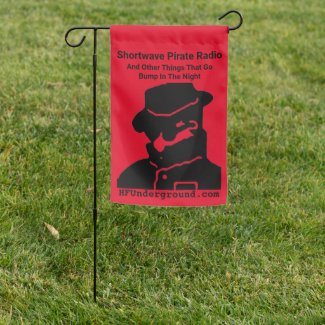Yes, antennas are certainly just as an important factor as the transmitter power, perhaps even more so. Perhaps worthy of a writeup themselves...
Regarding amazing reception of low power signals - it certainly does happen. But only when conditions allow it. You've got to have propagation conditions that allow the signal to be make it to your QTH, and you need low enough atmospheric noise levels so the signal is above the noise floor. That's the exciting part about DXing, when conditions all work together to allow you to hear that elusive weak signal.
Those of us with the space for large antennas, and who have fairly high end receivers, certainly have an easier time than the folks trying to DX pirates from an apartment QTH with a whip antenna. Good DX can happen with a portable and a whip. When I was just getting starting DXing I was using an old portable SW radio with a whip, and picked up some of the 1 kW Guatemalans on 90 meters. Of course local QRM levels were much lower back then than today. TVs and light dimmers were about all we had to deal with, not a house with literally several dozen switching power supplies.
There's two components to good DX: skill and luck. The skill part is knowing where and when to listen. You're not going to pick up a 100 watt 3 MHz tropical station from the other side of the world at local noon. You might pick up that station during grayline conditions, but you still need the "luck" part - good propagation conditions and low noise (some of that is "skill" also, monitoring solar/geomagnetic conditions, for example, to know when to listen or when to not bother). Another part of "luck" might be patience, trying for the station repeatedly until you finally do hear it.
I can pick up a TIS station from Arlington, VA on 1700 kHz during the daytime, which runs 10 watts. That's about 60 miles, which is pretty good for daytime low power MW station. The interesting part is that it's a pretty reliable "pest" on 1700. There's much closer TIS stations on the same frequency, with the same transmitter power, that I don't hear. So there's some combination of factors that cause reception of this station to be so good. Their antenna, my antenna, and the path between us, most likely.



